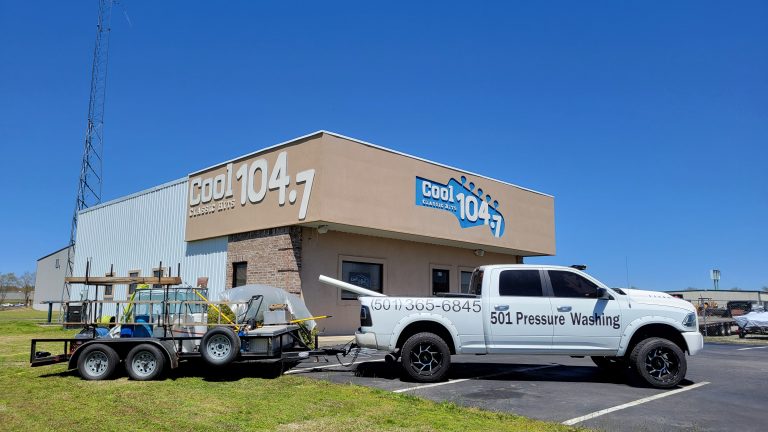Chemical Cleaning 101: Understanding Biodegradable Detergents
In an era where environmental consciousness is at the forefront of many discussions, understanding the role of biodegradable detergents in chemical cleaning becomes increasingly essential. Whether you're considering soft washing your home’s exterior or executing a detailed cleaning project, knowing how to employ eco-friendly cleaning solutions can help you achieve long-lasting results while preserving our planet.

Biodegradable detergents are designed to break down naturally without harming the environment. This feature makes them an attractive option for various applications, including roof cleaning, house washing, siding cleaning, and more. With benefits such as reduced toxicity and enhanced safety for plants and animals, they offer an excellent alternative to harsh chemicals traditionally used in chemical cleaning practices.
What Are Biodegradable Detergents?
Biodegradable detergents contain surfactants and other ingredients that decompose into non-toxic substances when exposed to the environment. Unlike conventional cleaners that may leave harmful residues, these eco-friendly alternatives effectively clean surfaces while minimizing environmental impact.
Surfactants: These are compounds that lower the surface tension of water, allowing it to penetrate and lift dirt more effectively. Surfactants in biodegradable detergents are often derived from natural sources such as plant oils.
Algaecides: Frequently included in biodegradable formulas for their effectiveness against organic growth like algae and mold, algaecides help maintain the aesthetic appeal of surfaces.
Sodium Hypochlorite: While commonly used in traditional bleach solutions for mold removal and mildew removal, sodium hypochlorite can also be found in environmentally friendly formulations that prioritize safety.
These elements work together to provide effective stain removal while ensuring that every application respects environmental compliance and supports sustainable practices.
The Benefits of Using Biodegradable Detergents
When considering chemical cleaning methods like soft washing or low-pressure cleaning, opting for biodegradable detergents presents numerous advantages:
Eco-Friendly Cleaning: As mentioned earlier, biodegradable detergents break down naturally, reducing pollution and protecting wildlife.
Gentle Cleaning Action: Their non-abrasive nature makes them suitable for various surfaces including vinyl siding cleaning, stucco cleaning, wood cleaning, concrete cleaning, and even delicate materials like asphalt shingles or cedar shake roofs.
Preventative Maintenance: Regular use of biodegradable products can help prevent future build-up of mold or algae on surfaces, leading to less frequent deep cleanings.
Enhanced Curb Appeal: Regularly using these gentle yet effective products contributes significantly to maintaining your property's aesthetics by preventing stains and streaks from developing on roofs and walls.
Safety First: In addition to being safer for the environment, these cleaners pose fewer health risks for humans during application compared to conventional chemicals.
Application Techniques for Chemical Cleaning with Biodegradable Detergents
Understanding how to properly apply biodegradable detergents is crucial for achieving optimal results while maximizing safety:
Soft Washing vs Low-Pressure Cleaning
- Soft Washing: A method that utilizes low-pressure equipment combined with biodegradable detergents allows for effective surface preparation without damaging materials. The dwell time—how long the solution sits before rinsing—is critical here; it lets the cleaner break down grime effectively. Low-Pressure Cleaning: This technique is ideal for exterior surface cleaning tasks such as gutter cleaning or fascia cleaning without risking damage caused by high-pressure blasts.
Chemical Application Methods
Depending on your project requirements—whether it's roof preservation or stain removal—you might choose between downstream injection or upstream injection methods:
- Downstream Injection: Suitable for larger areas where extensive coverage is needed; this method mixes the detergent with water at a lower pressure. Upstream Injection: Ideal for spot treatments where precision is crucial; this method delivers concentrated cleaner directly onto specific spots needing attention.
Frequently Asked Questions (FAQs)
1. What surfaces can I clean using biodegradable detergents?
Biodegradable detergents are versatile enough for various surfaces including roofs (asphalt shingle cleaning), siding (vinyl siding cleaning), decks (deck cleaning), patios (paver cleaning), fences (fence cleaning), and concrete pathways (concrete cleaning).
2. How do I know if a product is truly biodegradable?
Look for certifications from organizations that validate environmental claims or check labels for terms such as "eco-friendly," "biodegradable," and "non-toxic."
3. Can I use biodegradable detergents in commercial applications?
Absolutely! Many commercial soft washing services utilize eco-friendly products emphasizing safe roof cleaning techniques while adhering to warranty-safe practices.
4. Do biodegradable cleaners work as well as traditional ones?
Yes! Biodegradable cleaners have come a long way in terms of efficacy; they can provide similar results as traditional chemicals when applied correctly with appropriate dwell times.
5. How often should I perform seasonal cleanings?
An annual maintenance schedule is generally recommended but consider more frequent cleanings if your property experiences Conway AR gutter cleaning experts high levels of organic growth due to weather conditions or location.
6. Is there a risk of damaging my plants when using chemical cleaners?
If applied correctly—especially when utilizing runoff management techniques—biodegradable options are much safer than traditional cleaners which may harm surrounding vegetation.
Conclusion
In conclusion, chemical cleaning with a focus on biodegradable detergents represents a significant step toward environmentally responsible practices without compromising on quality or effectiveness. By understanding their components—surfactants and algaecides—and how they function within various applications like soft washing or low-pressure cleaning jobs, individuals can make informed decisions about maintaining their properties safely.
Transitioning away from toxic chemicals not only enhances curb appeal through effective stain removal but also promotes sustainable living practices beneficial for future generations. So next time you're preparing for some exterior surface cleansing—be it roof streaks removal or siding maintenance—consider choosing eco-friendly solutions that align with the principles of environmental stewardship while still delivering exceptional cleanliness!